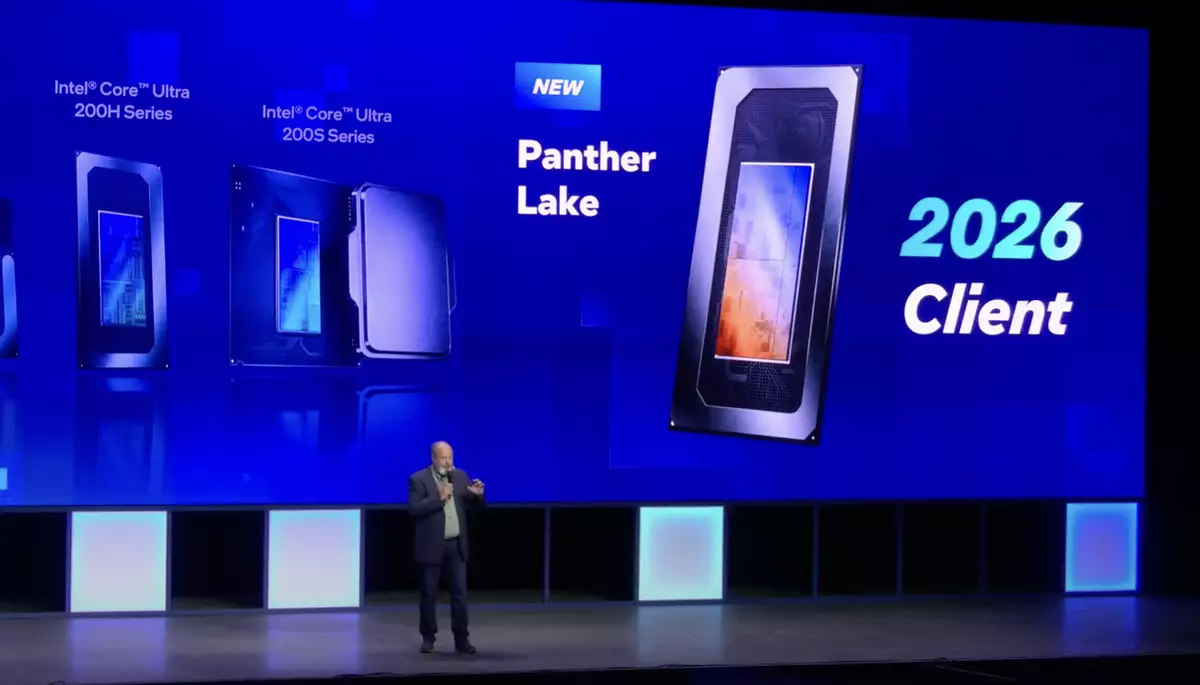As Intel continues to grapple with its position in the semiconductor industry, the new CEO Lip-Bu Tan presented a vision designed to reestablish the brand’s innovation leadership at the Intel Vision 2025 event. The landscape of CPU development is no longer dominated by Intel alone, with competitors like AMD and TSMC consistently pushing the envelope. Intel’s strategy, while ambitious, has its share of hurdles. The announcement of the Panther Lake CPU might appear to be a step forward, but it’s crucial to scrutinize what this really means for tech enthusiasts and industry stakeholders.
Pawing Through the Panther Lake Details
One of the most noteworthy details unveiled was the Panther Lake CPU, a project that combines efficiency and performance by leveraging technologies from its predecessors, Lunar Lake and Arrow Lake. The idea of a CPU that meshes the low-power efficiencies of Lunar Lake with the robust performance metrics of Arrow Lake should generate excitement. However, the reality is that this is merely a continuation of a well-trodden path—an incremental enhancement rather than a groundbreaking leap that the market has come to expect.
Lunar Lake has emerged as a strong contender in the ultra-portable laptop segment, thanks to its impressive power efficiency. Meanwhile, Arrow Lake has been instrumental for those seeking higher core counts and better computational performance. The narrative surrounding Panther Lake suggests it can achieve a unique blend of these attributes; however, it has been met with skepticism based on timing and execution.
The Timeline: Dreams vs. Reality
Jim Johnson, Intel’s lead for client computing, indicated that Panther Lake CPUs are on schedule for production this year, with expectations posed for a consumer release in 2026. This extended timeline from production to market availability reveals a historical flaw in Intel’s manufacturing protocols—waiting to put products into consumer hands often makes them obsolete before they can even hit the shelves.
Consumers should not only expect products but instantaneous innovation. By the time Panther Lake products reach the market, will they be competitive with established offerings from TSMC’s N3 or future N2 nodes? The fear of obsolescence looms large as tech advances at breakneck speeds, and this valid concern reflects the broader uncertainties around Intel’s operational efficacy.
Delays and Technological Hurdles
Delays underscore a broader narrative of Intel over-promising and under-delivering. The ambitious 18A node technology, touted for its enhanced transistor density and cutting-edge architecture capabilities, has been plagued by yield issues. When we look back to Intel’s infamous history with its 10nm node, it’s evident that overly ambitious timelines can lead to a catastrophic loss of credibility. The industry cannot afford to maintain a company whose operational delays are the stuff of legends.
Any delays tend to stem not just from manufacturing issues but represent more systemic failures in tech management and strategic execution. Could 18A experience the same tortured fate as its 10nm predecessor? Countless stakeholders have a vested interest in whether Intel can shift from manufacturing chaos to technological prowess.
The Road to Recovery: Competitive Landscape
With hefty competition from TSMC, the question isn’t just if Intel can produce Panther Lake on time, but whether it can become a legitimate competitor under such rapid advancements from rival entities. As companies like AMD leverage aggressive pricing and high-performance architectures, Intel’s once-untouchable position is increasingly at risk.
Ultimately, for Intel to reclaim its title of industry leader, it must not only produce performant CPUs but also create a sense of urgency and excitement around its innovations. What’s needed now is not just a revitalized product, but a reimagined approach to development and market engagement—a vision that aligns with the rapidly changing demands of the tech-savvy consumer base.
The anticipation around the Panther Lake CPU is palpable, yet it’s clouded by uncertainty. Only time will tell if Intel can navigate its treacherous waters or if it remains a cautionary tale for ambition mismanaged. The narrative is tinged with hope but anchored by a reality that insists that promises translated into action are the true heralds of innovation.


Leave a Reply